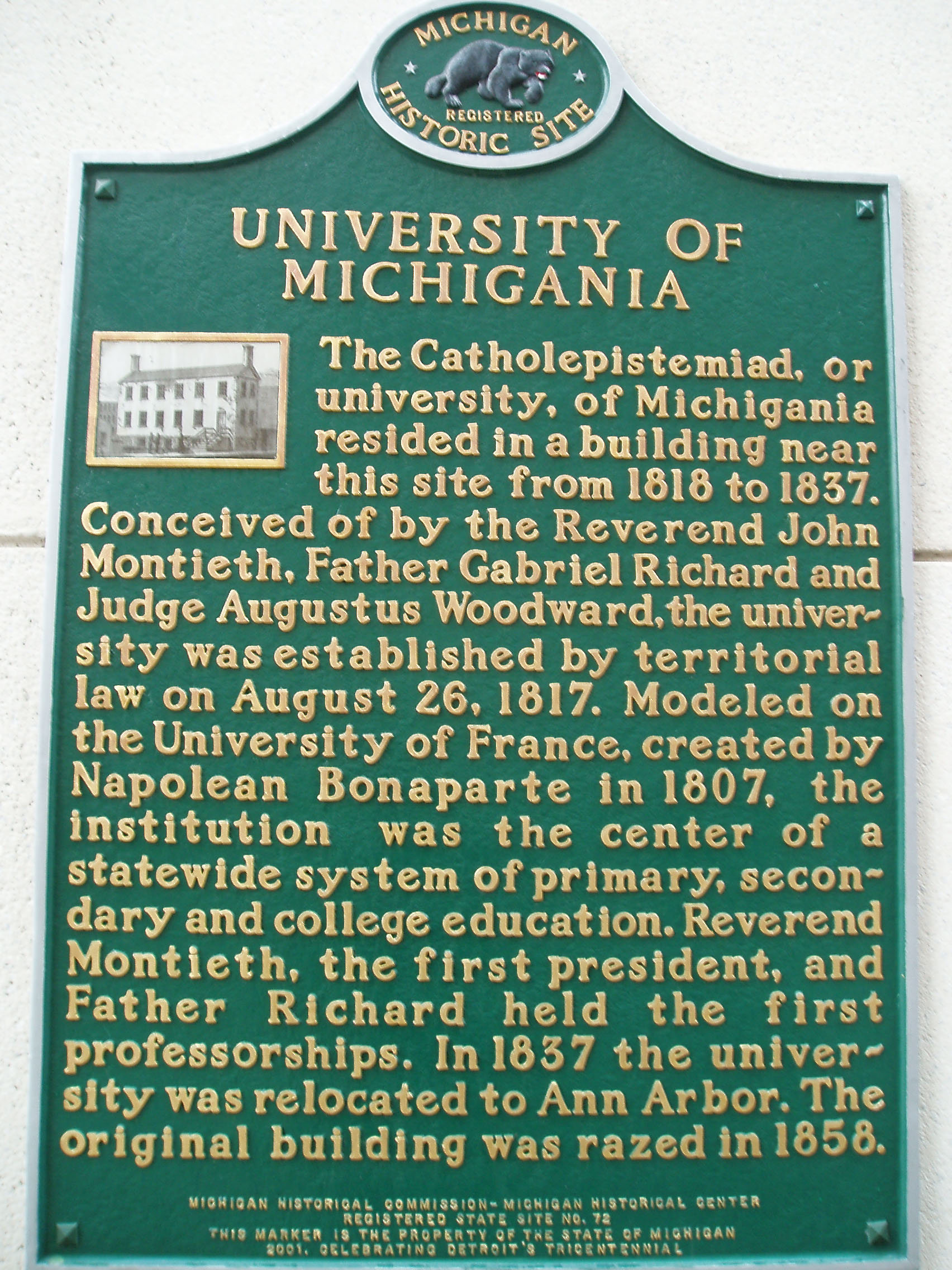

Detroit was a very small village at the turn of the Nineteenth
Century but Father Gabriel Richard and, later, Judge Augustus Woodward imagined
the growth of a major city. There were challenges. In 1805, most of the village
burned to the ground and then the General William Hull surrendered the city
in August, 1812 to the British who occupied it for 13 months. Nevertheless,
Father Richard was strongly influenced by French traditions and the French
revolution, so he founded several elementary schools for Europeans and another
for Indian children. Although still a remote location, Detroit grew somewhat
in the years of peace that followed the War of 1812.
On August 26, 1817, under the leadership of Augustus Woodward, the territorial legislature, meeting in Detroit, passed an act establishing the Catholepistemiad or the University of Michigania. Woodward, apparently, had strong interest in promoting a universal science. I believe that he coined the word Catholepistemiad. It is not Greek or Latin in origin. Woodward presumed that thirteen disciplines would be represented in this college, ranging, alphabetically, from Astronomy through Medicine to Universal Science or Catholepistemia which may have been his favorite. The Reverend John Monteith, who had arrived in Detroit the previous year from Princeton Theological Seminary, was named president of the Catholepistemiad and Father Gabriel Richard the vice-president. The act specified professors—presumably one for each of the 13 disciples—would govern the school.
On September 24, 1817 a cornerstone was laid for a two-story frame building located at the site where this historical marker is now found. By August 1818, the first floor was completed and an elementary school opened at this location. By 1819, the second story was finished and a classical academy began to operate. I presume that this academy sought to educate teenage students. Later, the Reverend John Monteith taught elementary grades in this building.
Territorial governor Lewis Cass mocked the name Catholepistemiad and labeled it pedantic and uncouth. He and the territorial legislature changed the name to the University of Michigan on August 30, 1821. This act also placed control of the institution in a Board of Trustees to be appointed, I presume, by the Governor and Territorial legislature. The Reverend John Monteith left Detroit the next year for an appointment at Hamilton College in New York.
The building on Bates streets continued to house an elementary school and a classical academy until 1827 when the University of Michigan suspended operation. In truth, I think that the institution was a university in name only until it was relocated in Ann Arbor. On March 18, 1837, the legislature accepted the offer of Ann Arbor business men to provide land to the University of Michigan. A new Board of Trustees was established and they gradually established a college. The modern University of Michigan opened in September of 1841 with seven students and two faculty members in 1871, the Trustees selected James B. Angell, who had been president of the University of Vermont, to be president of the Ann Arbor institution. He was president for 38 years and built the University of Michigan into a large and distinguished university.
The original Catholepistemiad Building on Bates Street was razed in the 1850. The historical marker shows its appearance.
State of Michigan Registry of Historic Places: Listed
State of Michigan Historical Marker: This marker is on the east side of East
Congress Street near the intersection with Bates Street.
Photograph: Ren Farley, February 3, 2006
Description prepared: November, 2008
Return to Commemorative Designations
in Wayne County
Return to Homepage